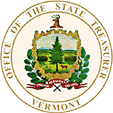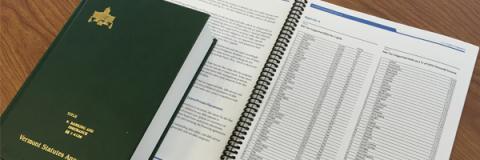Vermonters without access to a retirement savings plan through their employer may have an option facilitated by the state within the next three years, in a collaborative effort between State Treasurer Mike Pieciak and legislators.
A bill, S.135, establishing the VT Saves retirement program received unanimous preliminary approval in the Senate on Tuesday.
The bill would give the Office of the State Treasurer the ability to oversee an independent retirement account — an IRA — on behalf of an estimated 88,000 to 100,000 working Vermonters over age 18 who are not offered that benefit through their employer.
There are two key components to the program, which is based on the structure of programs already active in six states, Pieciak said in an interview.
First, businesses that employ five or more people and do not already offer a retirement savings plan would be required to enroll their employees or face fines.
Second, the program would be set up as a default “opt-in” enrollment, meaning employers would need to enroll all employees as the default choice, which has been shown in studies to significantly increase participation. The federal government embraced this idea in a recent law that will require employers offering 401k retirement savings plans to present the benefit this way.
“That’s broad recognition that this ‘opt-in’ approach is the best to get participation and to get people saving,” Pieciak said.
In VT Saves, an employee’s contribution would start with an automatic deduction of 5% of wages, but an individual could request that percentage be lowered or to opt out at any time. The amount put into retirement would automatically be raised annually by 1% of earnings each year to a maximum of 8% unless requested otherwise. Participants can also request to have a greater percentage taken out.
Employers are prohibited from contributing to a VT Saves plan. If employers contribute it becomes an employer-sponsored plan, which triggers a complex set of federal regulations around employer benefits, Pieciak said.
The program would use an after-tax individual retirement account, the so-called Roth IRA, because of its simplicity. The deduction would flow directly from the employer to a third-party vendor or vendors chosen through development of the program by the state treasurer’s office.
Having the ability to opt-out of the plan is very important, as some households use every penny earned to meet basic needs, Pieciak said. One benefit of the after-tax plan is that the account-holder can withdraw the amount originally deposited without a penalty at any time.
“It has that secondary benefit of being an emergency savings account,” which many Vermont households don’t have, Pieciak said.
A study of fringe benefits in 2019 by the Vermont Department of Labor found that 45% of all private employers in Vermont do not offer a retirement benefit. For businesses with fewer than 20 employees, that number increases to 55%.
That is significant because people with an employer-sponsored plan tend to participate in the plan at rates upward of 70%. In contrast, only about 5% of those without an employer-based plan end up opening one, according to a survey cited by the AARP Public Policy Institute.
People without access to an employer savings plan in Vermont, and across the country, tend to be younger and lower-earning. Not having an employer-offered plan is also more common among women and racial minorities, researchers say.
The six states with similar programs underway are California, Connecticut, Illinois, Maryland, New Jersey and Oregon. At least six others, including Maine and New York, are getting them started, according to the State Treasurer’s Office.
This kind of a program is much needed in Vermont, according to organizations that work with Vermonters at or nearing retirement age.
“Too many older Vermonters are not prepared for retirement, including the costs of long-term care,” wrote Angela Smith-Dieng, director of the Adult Services Division at the Vermont Department of Aging and Independent Living, in testimony in support of the bill.
In a statewide survey in 2020, almost half of respondents thought that Medicare would pay for their long-term care needs, but that is not an expense that the program covers, Smith-Dieng said. Many Vermonters end up draining their personal resources and then need to apply for long-term-care Medicaid, which adds to both state and federal health care costs.
Neither Medicare nor Social Security payments alone are enough to ensure a secure retirement, Greg Marchildon, the AARP Vermont state director, told the Senate Committee on Economic Development, Housing and General Affairs. A retirement savings plan and a personal savings account are also needed, he said.
“All four of them have to be working in conjunction with each other,” Marchildon said.
Early adopter states have found that over 70% of those enrolled in the savings account stay in the first year, and more than 90% continue after that, Pieciak said. The average savings in California and Oregon was around $2,000 per year per participant. That adds up if savings begin early in a career, complemented by compound interest earned.
But even a smaller amount saved can have an impact if it is enough to allow someone to delay requesting Social Security payments by even a year, Pieciak said. The per-year Social Security payments increase by 7% to 8% for each year the payments are not taken.
Pieciak wants the program up and running in time for income-eligible participants to qualify for a federal match of every American’s retirement savings up to $2,000. The match was part of the federal appropriations bill approved at the end of December and would begin in 2027.
Pieciak’s office is requesting $750,000 in fiscal year 2024 to stand up the program. After that, the operating costs would be covered by an annual fee of no more than $30 per year per participant at no cost to the state.
The program would be required of employers of 25 or more people by July 1, 2025. By Jan. 1, 2026, employers of 15-24 people would need to start participating. By July 2, 2026, any employer of five people or more would be required to enroll employees.
Several senators raised questions about whether it would encourage employers to drop plans. Pieciak said other states found the opposite. They report that more employers are motivated to start their own plans that they can contribute to, once they realize that otherwise they will be required to participate in the state plan, he said.
Pieciak was pleased but not surprised by the support in the Senate. A program structured this way appeals to people from every political persuasion, he said.
“To be able to offer that vehicle at no cost to the state, it’s kind of a no-brainer,” Pieciak said. “I think everyone can see the value in that.”
Sen. Randy Brock, R-Franklin, made that clear.
“This is the kind of bill that I love,” he said as he introduced it. “It costs next to nothing. It doesn’t raise taxes. It starts a new program that is voluntary and it saves the state money in the long term. What could be better than that?”





